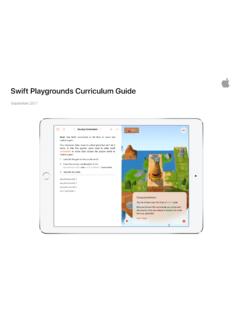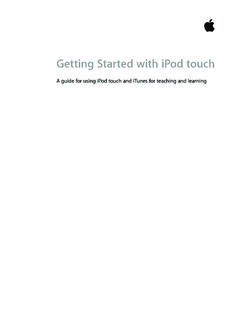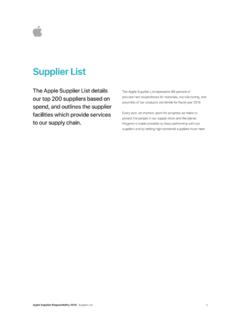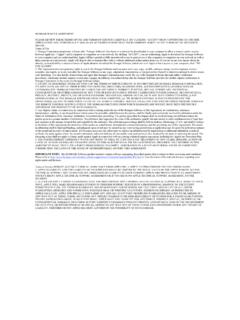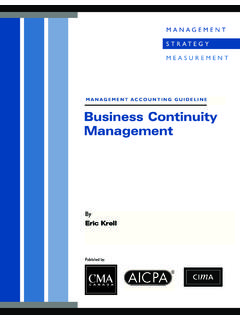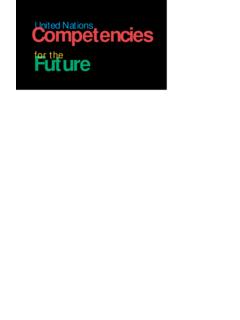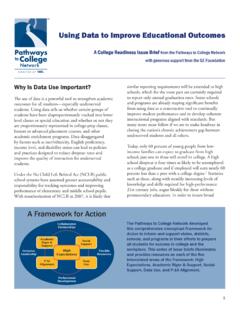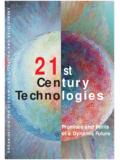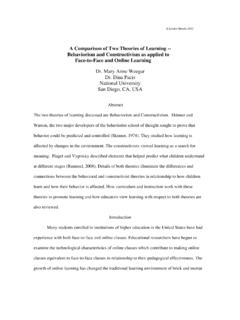Transcription of Challenge Based Learning A Classroom Guide - Apple
1 Challenge Based LearningA Classroom GuideContentsIntroduction to Challenge Based Learning 3 Teacher Planning and Preparation 4 Understanding the Process 4 Access to Technology and a Collaborative Workspace 5 Defining the Student Products 5 Determining Assessment Strategies 7 School and Community Partnerships 8 Knowing Your Evolving Role 8 Challenge Based Learning in the Classroom 9 Stage 1: From Big Idea to the Challenge 9 Stage 2: Setting the Foundation for the Solution 11 Stage 3: Identifying a Solution 13 Stage 4: Implementation and Evaluation 13 Stage 5.
2 Publishing Results and Reflections 15 Frequently Asked Questions 16 Resources Setting the Stage 18 Big Ideas and Essential Questions 19 Preparation Checklist 20 Standards and Assessment 22 Thoughts on Standards 23 Sample CBL Rubric 25 Assessment Ideas 26 Supporting the Process 27 Roles and Responsibilities 28 Guiding Questions, Resources, and Activities Matrix 29 Group Challenge Guide 30 Technology Guide 32 Reflection Prompts 33 CBL Team Contract 34 Publishing 36 Challenge Proposal Storyboard 37 Solution Storyboard 38 Video Specifications 39 Thank You 40 2010 Apple Inc.
3 All rights reserved. Apple , the Apple logo, FaceTime, iChat, iMac, iMovie, iPhone, iPhoto, iPod touch, iSight, iTunes, iWork, Mac, Mac OS, MacBook, Numbers, Pages, QuickTime, Safari, and Snow Leopard are trademarks of Apple Inc., registered in the and other countries. iPad and iWeb are trademarks of Apple Inc. MobileMe is a service mark of Apple Based Learning : A Classroom Guide 2 Introduction to Challenge Based LearningStudents today have instant access to information through technology and the web, manage their own acquisition of knowledge through informal Learning , and have progressed beyond consumers of content to become producers and publishers.
4 As a result, traditional teaching and Learning methods are becoming less effective at engaging students and motivating them to s students are presented with content-centric assignments that meet standards but lack a real-world context and opportunities for active participation. Because these assignments often fail to engage students, they can lead to uninspired work and a gradual process of disengagement. Studies from the National Center for Education Statistics show that more than 30% of students drop out before the end of their first year of high school.
5 Fortunately, the disengagement process can be reversed, and one of the most effective strategies for doing so as reported by students themselves is more relevant, challenging coursework (John M. Bridgeland, John J. Dilulio, Jr., Karen Burke Morison, The Silent Epidemic: Perspectives of High School Dropouts, Civic Enterprises in association with Peter D. Hart Research Associates for the Bill & Melinda Gates Foundation, March 2006).To address this need, Apple Inc. worked with teachers and leaders in the education community to develop a new approach to teaching and Learning called Challenge Based Learning , an engaging, multidisciplinary approach that starts with standards- Based content and lets students leverage the technology they use in their daily lives to solve complex, real-world problems.
6 Challenge Based Learning is collaborative and hands on, asking students to work with other students, their teachers, and experts in their communities and around the world to develop deeper knowledge of the subjects they are studying, identify and solve challenges , make a difference in their community, and share their results with the interdisciplinary, cooperative, and applied nature of Challenge Based Learning makes it perfect for students of all ages. This Guide is for educators from elementary grades to higher education who want to implement Challenge Based Learning in their Learning environment.
7 The Guide includes specific recommendations for planning and implementing Challenge Based Learning and includes best practices, practical tips, frequently asked questions, and ways to adapt the approach for younger students. The Appendix contains a collection of resources designed to facilitate the Challenge Based Learning Based Learning : A Classroom Guide 3 Challenge Based Learning is a collaborative Learning experience in which teachers and students work together to learn about compelling issues, propose solutions to real problems, and take action.
8 The approach asks students to reflect on their Learning and the impact of their actions and publish their solutions to a worldwide Planning and PreparationChallenge Based Learning mirrors the 21st century workplace. Students work in collaborative groups and use technology to tackle real-world issues in the context of their school, family, or local community. For teachers, the task is to work with students to take multidisciplinary standards- Based content, connect it to what is happening in the world today, and translate it into an experience in which students make a difference in their community.
9 Accomplishing this goal necessitates giving students structure, support, checkpoints, and the right tools to get their work done successfully, while allowing them enough freedom to be self-directed, creative, and the ProcessChallenge Based Learning begins with a big idea and cascades to the following: the essential question; the Challenge ; guiding questions, activities, and resources; determining and articulating the solution; taking action by implementing the solution; assessment; and publishing the solution and sharing it with the world. Reflection and informative assessment are an important part of the process at every stage as they reinforce Learning and prepare students for what is coming IdeaEssential QuestionGuiding QuestionsGuiding ActivitiesGuiding Resources:Web and iTunes UPublishing: Student SolutionsPublishing: Student ReflectionsEvaluation/AssessmentSolution : ImplementationThe ChallengeThe FrameworkChallenge Based Learning : A Classroom Guide 4 Best PracticesChallenge Based Learning mirrors the 21st century workplace.
10 To stay true to its intent, make sure participants: Work in collaborative groups Use technology commonly used in daily life Tackle real-world problems using a multidisciplinary approach Share the results with the worldAlthough teacher involvement throughout the Challenge Based Learning process is crucial, its nature changes as students progress through its stages. Early on when you introduce Challenge Based Learning to your students and set up the Challenge you are making decisions, communicating information, teaching skills, and answering questions about how the process works and what is expected of your students.
